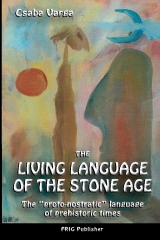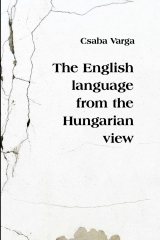Nostratic Language
We provide informations about human culture of prehistoric times
Scientists tell us that it could have been 1 million years ago or earlier, when humans were first making fire by rubbing pieces of dry wood.
Soon after – nobody knows when – they supposed to articulate their sensation of shivering by telling others “FÁZOM” = I feel cold (figuratively: I am handling wood or looking for wood) in Hungarian and only in that language (??) (Dénes Kiss)
FA means wood in Hungarian.
Nature builds every living creature organically. It starts with a kernel, which extends like a fractal (1,1) obeying strong rules. Early humans were living very close with nature in an “organic culture”. Sometimes – in distant past – humans decided to create a language to use for science and to express their metaphysical views. Living “close to Nature”, they may have been predestined to do so. These very intelligent people did not spend their time on fake words or things.
Clear rules were set: Divide the universe, as we perceive it, adequately into well separable parts. Name every part suitably and make a sign for it. These names and signs should not be mixed up easily. Just the particular assigned „primordial root” should name everything belonging to one specific part of the universe, nothing else. The Universe – like a cake – was cut into around 20 different slices. For further specification other roots or words are given – “glued on”- to the “sense-giving” primordial roots and the agglutinating “proto-nostratic language“ was born.
No language can become organically built and clearly agglutinating if not “somebody” sets the rules for it “artificially” at the very beginning. The once chosen primordial roots build a closed system, which did not change since the dawn of Humanity.
However, several cultures lost their vicinity to Nature and Universe during the long time of history, therefore they lost the original sense of language-creation, they rather inclined to molding and cleverness instead; and the word-building – not based on the primordial roots – started.
See: Csaba Varga “The Living Language of the Stone Age” (The “proto-nostratic” language of Eurasia).
COMPARING HUNGARIAN LANGUAGE WITH OTHER LANGUAGES:
| ETRUSCAN: | Mario Alinei: Etrusco: Una forma arcaica di ungherese, Il Mulino, Fríg publisher 2003. |
| LATIN: | Csaba Varga: The Living Language of the Stone Age (the proto-nostratic language of Eurasia), Frig publisher 2003. |
| OLD-GREEK: | Csaba Varga: “Ancient Greek = ancient Csango dialect of the Hungarian language”, Fríg publisher 2006. |
| SUMERIAN: | Maria Dietrich: A szumér kérdés megoldása, “Solving the Sumerian question”, Fríg publisher 2010. |
| TAMIL: | Szentkatolnai Bálint Gábor: “Tamil (Dravidic) studies, Hungarian-Tamil etymological dictionary“, Frig publisher 2005. |
| HEBREW: | Katona István: ”Comparison of Old-Hebrew and Hungarian root-words”, 1941. Dr. Tóth Alfred: “Comparison of Hungarian, Sumerian and Hebrew words” (On the Internet) |
| QUECHUA: | Csőke Sándor: “The relation of the Quechua and Uralic languages” |
| BASQUE: | Ferenczi Enikő: New Interpretation of the Ethnic Name “Scythian” and its Significance to the Etymology of the “Basque” |
| ENGLISH: | Csaba Varga: “The English language from the Hungarian view“, 2007 Fríg publisher |
COMPARING TWELVE LANGUAGES with HUNGARIAN:
Csaba Varga: “Our Words from the Past”, Frig publisher 2010,
It is the convincing proof of the proto-nostratic language.



